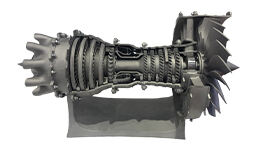The role of plastic 3D printing in aerospace
Technological advancement is a constant in the ever-changing field of aerospace engineering that keeps pushing limits. This has seen plastic 3d Printing in Aerospace or additive manufacturing become a game changer, transforming the way aircraft parts are designed, fabricated and maintained.
Introduction to Plastic 3D Printing
Another name for plastic 3d printing is the one other additive manufacturing subset. In this case, multiple layers of plastics substances are deposited as per a digital model aimed at forming three-dimensional solids. The technology allows for complex geometries and intricate designs which will be impossible or difficult to make using traditional manufacturing processes.
The Role of Plastic 3D Printing in Aerospace
The aviation industry has always been at the forefront of embracing innovative technologies. There are many uses of plastic 3D printing within this sector including prototype production as well as making flight-ready components.
Plastic 3D printing comes with one major advantage over anything else that is used especially in the aerospace industry; it allows us to build light and yet very strong components. With superior strength-to-weight ratios, these plastics like those made from engineering-grade polymers can therefore be effective when applied in aircrafts meant to reduce on fuel consumption by reducing their weight.
Furthermore, it is through plastic 3D printing that we can generate complex internal structures and geometries which cannot be achieved using traditional ways of making things. Therefore, modernized designs such as heat exchangers or fuel tanks can be developed to improve performance among others leading to efficient use of these machines.
Advantages of Plastic 3D Printing in Aerospace
There are several advantages associated with using plastic 3D printers for air transportation needs. First and foremost, prototype production becomes very cheap and fast since there will not be any expensive tooling needed like what happens when using traditional methods of production which take long before results come out. On the contrary, by printing prototypes with cheap materials, one can get faster results and improve them quickly.
Secondly, plastic 3D printing enables the production of customized parts that are specifically for particular aircraft and uses. It is always a problem to make this kind of customization work without using traditional methods because they tend to rely upon off-the-shelf parts.
Lastly, plastic 3D printing can be used to create small quantities or even single parts rather than having large scale manufacturing runs. In aerospace applications where some components are needed at low volumes this is particularly important.
In conclusion, plastic 3D printing has changed the face of the aerospace industry as it allows for making light weight yet strong and tailored components at a fast rate and competitive cost. As technology develops further in future days it’s set to become more vital in shaping the course of aerospace engineering.
Recommended Products
Hot News
-
3D Printing: The Key to Design Freedom and Sustainability in Smart Factories
2024-02-05
-
How 3D Printing and Robotics are Transforming Smart Factories
2024-02-05
-
How UNITECH 3D PRINTING (DONGGUAN) LIMITED (Dongguan Huilichuang 3D Technology Co.,Ltd) is Revolutionizing the 3D Industry with Multiple Printing Techniques
2024-02-05
-
UNITECH 3D PRINTING (DONGGUAN) LIMITED (Dongguan Huilichuang 3D Technology Co.,Ltd): A Pioneer in Diverse 3D Printing Solutions
2024-02-05

 EN
EN
 AR
AR
 FR
FR
 DE
DE
 IT
IT
 JA
JA
 KO
KO
 PT
PT
 RU
RU
 ES
ES


